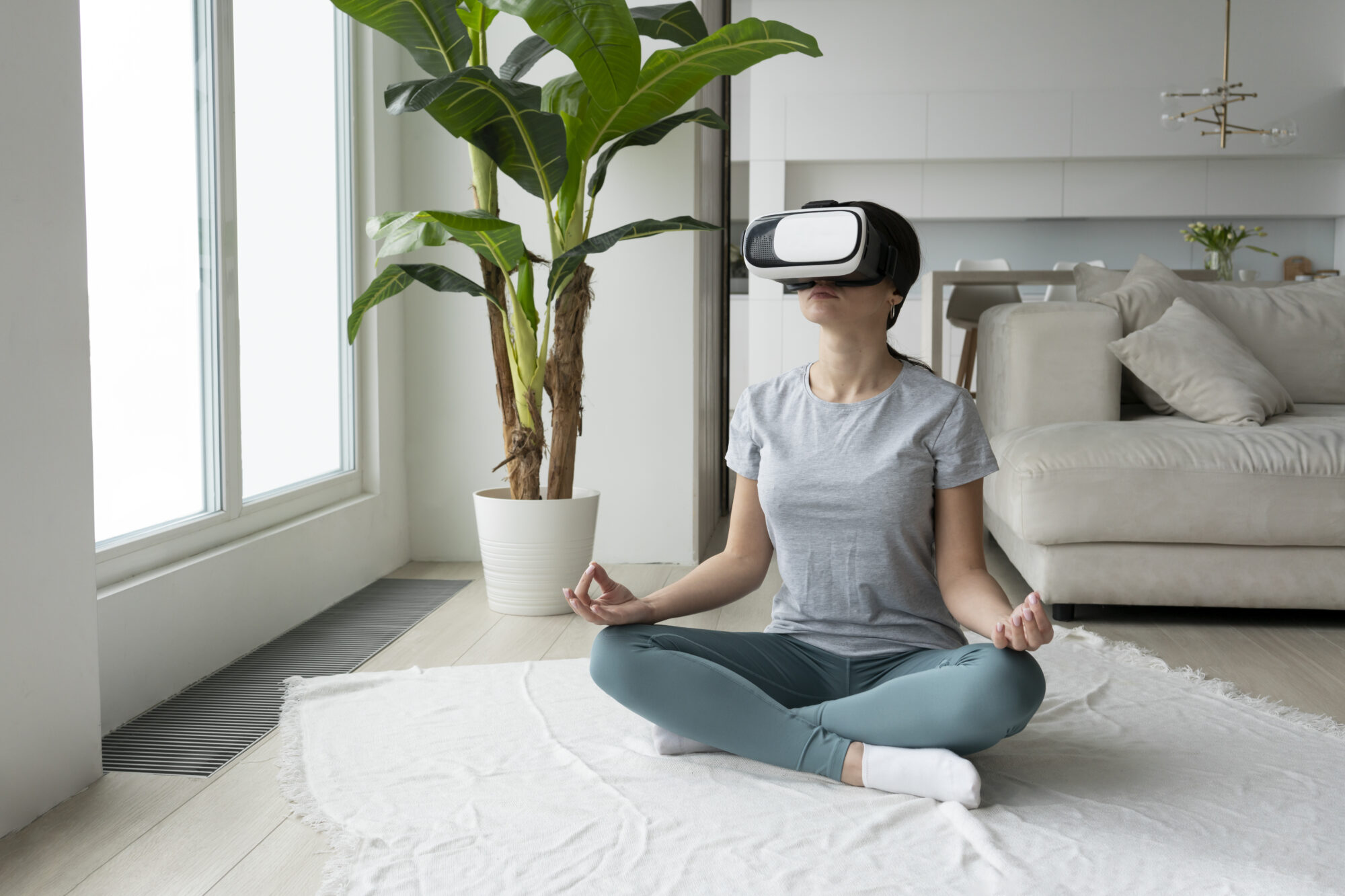
VRT- A Revolution in the World of Mental Health and Therapy
When we think about Virtual Reality (VR), our mind immediately transports to immersive gaming experiences! Because what else can give you such an immersive and real-world experience other than gaming? Nothing, right?!
But, VRT (Virtual Reality Technology) has surpassed gaming long ago. Nowadays, it is used extensively in therapy sessions to improve mental health via computer-generated simulations. Such immersive and interactive experiences make virtual reality for mental health therapy a seamless and effective option.
So, how exactly has VRT revolutionized the mental health sector? And how is it beneficial for people seeking therapy? Find out in the next section.
VRT and Its Positive Effects on Mental Health
1. Helps In Exposure Therapy
Virtual Reality Exposure Therapy (VRET) is a specialized VRT that feels like stepping into a 3D movie, where you can interact with your surroundings! VR helps create a safe and controlled 3D environment for exposure therapy. Such an interactive experience helps people deal with their fears and confront them.
People suffering from issues like Acrophobia (fear of heights), Arachnophobia (fear of spiders), and Glossophobia (fear of speaking publicly) can confront their fears virtually with controlled exposure! This safe practice in virtual reality therapy helps them get more comfortable to face their fears in reality!
2. Makes Therapy Sessions Easily Accessible
Many people might need therapy for their mental issues. Sadly, they can’t reach out for help due to a myriad of factors like embarrassment, distance, and budget constraints. However, VRT implementation has resulted in wearing off such inconveniences. It is easier to access VRTs than to follow up with traditional appointments with a psychiatrist.
Along with it, VR therapy is also much cheaper and more convenient, thereby encouraging people to seek the help of a therapist eventually. People can access and try out therapy sessions on their own terms rather than finding a therapist.
3. Assists In Focusing And Relaxation
The benefits of virtual reality therapy are not restricted to just helping people dealing with mental health issues. It can also be effectively used to promote relaxation and improve your focus!
Creating virtual landscapes like empty beaches or tranquil mountains triggers a sense of serenity in the patients. These calm and peaceful virtual environments help to significantly reduce stress and anxiety levels, induce a sense of peace, and increase your mindfulness simultaneously!
4. Helps Enhance Social Skills
The main purpose of VR is to create a safe and secure environment. It’s essential for people suffering from severe mental issues like social anxiety or autism spectrum disorder (ASD). They get a secure and secluded place where they can practice their social skills and rehearse real-world scenarios without any fear of getting judged or noticed.
Practicing in a virtual environment can eventually help such patients to gain confidence. They can be more vocal about their choices, likes, and dislikes, and also can enhance their social interaction skills.
Pro Tip: Suffering from trauma or mental health issues is just as normal as other illnesses. Choosing to not confront them aggravates the issues even further, and makes patients start to seek augmented reality for mental health therapies in the long run. If you are someone battling with your inner demons or are depressed, try to seek help ASAP to get your condition diagnosed and treated.
Challenges in the Sector
Now that you’re aware of the benefits of VR in Mental Health, let’s take a look at the various challenges of VR implementation in therapies.
1. Technical Glitches
VR therapy is in the development stage at present. So, issues like visual discomforts, or latency (delays) can be the root cause behind disruptions in an ongoing therapy session.
2. Accessing Can Get Expensive
Since VR is a new concept that we are dealing with, access to equipment can get expensive. This might create a huge gap, and prevent patients from approaching mental therapy sessions freely.
3. It’s A Tool, Not A Replacement!
VRT is not a substitute for traditional therapists anyway! It is just an advanced toolset that helps along the procedure. Compared to the expertise and diagnosis skills of a trained psychiatrist, or psychologist, VR is nothing but a mere tool that helps aggravate the process of healing.
Wrapping It Up
Suffering from a mental trauma, or any kind of mental issue, is a tough phase. You might not be able to realize how badly you’re affected, until expert diagnosis. So, to prevent yourself from getting into too much depression or trauma, indulge in some self-care to help you cope with your issues.

Theresa Perez is a seasoned writer for the health industry dedicated to providing fact-based health information. She sources concise facts from authoritative sources to ensure maximum credibility and shares guidelines to lead a healthy lifestyle.
Copyright © 2025 The Healthcare Facts. All Right Reserved.

